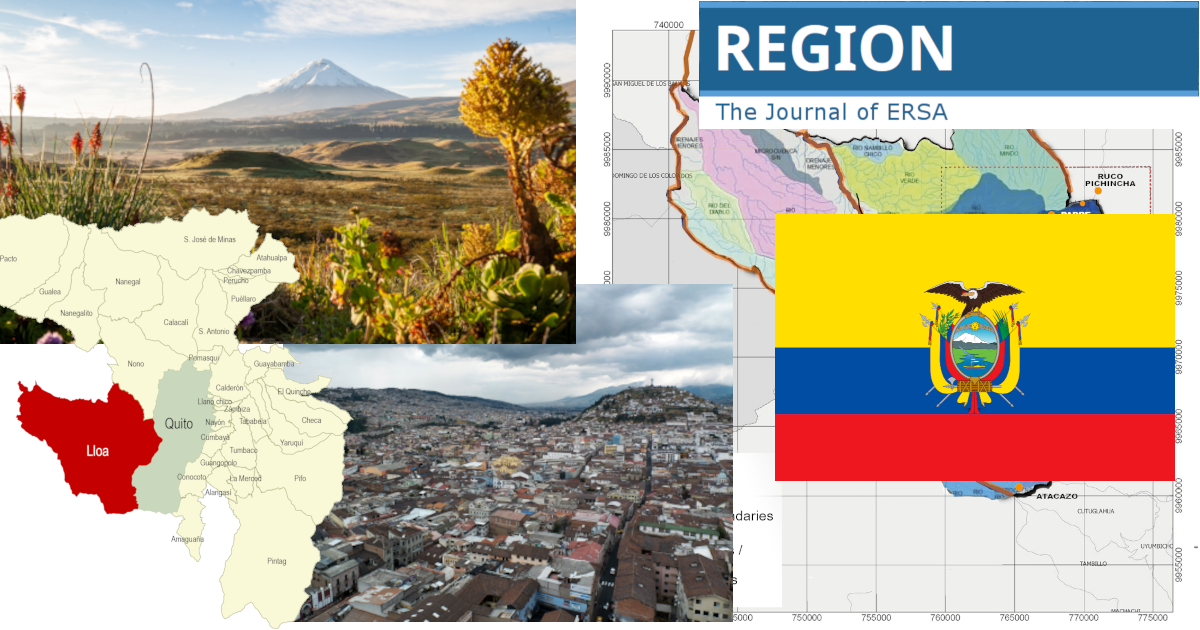Defining marginality in the periurban areas of Quito
A descriptive approach based on empirical and spatial data
DOI:
https://doi.org/10.18335/region.v10i1.393Abstract
In Latin America, marginality is a complex phenomenon involving various geographically significant factors, including the critical, physical, social, and human aspects. Bouldering areas of cities are often excluded from infrastructural interventions and social policies. In the case of Andean countries such as Ecuador, marginality affects not only rural lands but also in-transition areas between different geographical regions, as in the case of mountainous and coastal zones. These regions are characterized by a wide range of natural resources and climate conditions, and because of their diversity and relative proximity to the major cities, they offer potential for sustainable development. Nonetheless, the lack of infrastructure affects the accessibility of these periurban areas and critically limits their interaction. Drawing on these elements, the paper seeks to investigate whether periurban areas can be considered marginal and what tools can depict an encompassing image of local marginality, stressing its advantages for the local community. Following this idea, the paper focuses on the case of Lloa, a large rural parish in the Metropolitan District of Quito (DMQ), to determine which criteria can better capture its marginality, considering it as a periurban in-transition area. The paper suggests a cross-discipline methodology to push the limits of the field through the review of a significant body of literature and a thorough qualitative and quantitative analysis of the case study. Finally, the paper emphasizes the inadequacy of the current forms of planning to effectively define the marginality of periurban areas as a whole in the region by reflecting on the case study and through an analysis of the existing land use plans.

Downloads
Published
How to Cite
Issue
Section
License
Copyright (c) 2023 Riccardo Porreca, Nadia Rodriguez.Pazmiño, Vasiliki Geropanta, Paola Bracchi

This work is licensed under a Creative Commons Attribution 4.0 International License.
REGION is an open journal, and uses the standard Creative Commons license: Copyright We want authors to retain the maximum control over their work consistent with the first goal. For this reason, authors who publish in REGION will release their articles under the Creative Commons Attribution license. This license allows anyone to copy and distribute the article provided that appropriate attribution is given to REGION and the authors. For details of the rights authors grant users of their work, see the "human-readable summary" of the license, with a link to the full license. (Note that "you" refers to a user, not an author, in the summary.) Upon submission, the authors agree that the following three items are true: 1) The manuscript named above: a) represents valid work and neither it nor any other that I have written with substantially similar content has been published before in any form except as a preprint, b) is not concurrently submitted to another publication, and c) does not infringe anyone’s copyright. The Author(s) holds ERSA, WU, REGION, and the Editors of REGION harmless against all copyright claims. d) I have, or a coauthor has, had sufficient access to the data to verify the manuscript’s scientific integrity. 2) If asked, I will provide or fully cooperate in providing the data on which the manuscript is based so the editors or their assignees can examine it (where possible) 3) For papers with more than one author, I as the submitter have the permission of the coauthors to submit this work, and all authors agree that the corresponding author will be the main correspondent with the editorial office, and review the edited manuscript and proof. If there is only one author, I will be the corresponding author and agree to handle these responsibilities.




